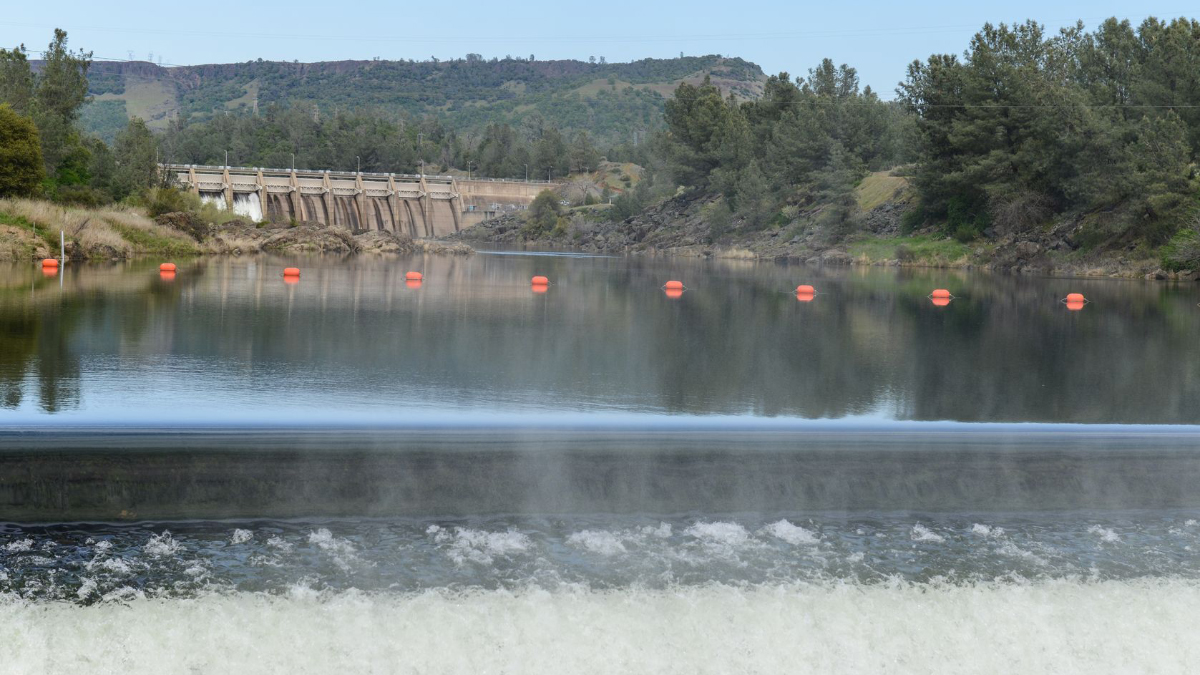Just about one year ago, the collapse of two spillways at Oroville Dam forced the frantic evacuation of 188,000 people, caused millions of dollars in property damage and triggered hundreds of lawsuits. Earlier this month, an independent forensic team found that decades of reckless mismanagement by the California Department of Water Resources caused the crisis. Instead of making needed changes, Sacramento has responded by increasing the department’s control.
What’s needed instead is to transfer Oroville Dam and California’s 43 other state-owned dams to private ownership and operation.
This is not a radical idea; 64 percent of the 90,580 dams in the Army Corps of Engineers’ national inventory are privately owned. Even here in California, the figure is 43 percent.
Dam safety experts faulted the Department of Water Resources for “ineffective and possibly detrimental” repairs, inadequate procedures to “identify risks and manage safety,” and for being “overconfident and complacent,” conducting “very little actual research.” The problems persist.
Cracks were detected in sections of the newly reconstructed main flood-control spillway. Predictably, department spokeswoman Erin Mellon downplayed the cracks as “something you expect to see.”
Not according to UC Berkeley civil engineering Professor Emeritus Robert Bea, an expert on dams, who said, “Cracking in high-strength reinforced concrete structures is never ‘to be expected’” and can be deadly, allowing water to corrode steel embedded in the concrete.
Indeed, “Such corrosion was responsible for the ... ultimate failure of the steel reinforcing in parts of the original gated (Oroville Dam main) spillway,” Bea said.
The department also estimates the reconstruction costs at $500 million, nearly double the initial estimate of $275 million, after workers discoveredthey must dig deeper than expected to reach bedrock.
Department of Water Resources mismanagement is not new. During Oroville Dam’s relicensing more than 12 years ago, environmental groups filed a motion with federal regulators to require the department to armor with concrete the emergency spillway’s earthen hillside. Despite the warnings and precautionary recommendations, regulators and the department failed to act.
Safety experts also found that the department allowed the dam’s main spillway to be built on faulty bedrock, used thin layers of concrete around vital spillway joints, and tolerated a flawed drainage system and cracks, allowing water to seep into the chute’s interior. Shoddy maintenance was commonplace during 50 years of preventable decay.
In response to the debacle, Gov. Jerry Brown issued a weak four-point plan, and the department created three deputy directors. But more layers of bureaucracy won’t solve the problems that bureaucracy helped create. Institutional reform is needed.
Currently, more than half (53 percent) of the 1,585 California dams monitored by the U.S. Army Corps of Engineers are categorized as having a “high hazard potential,” where “loss of human life is likely if the dam fails.” Nationally, the figure is 17 percent. Having the Department of Water Resources at the helm, with its opaque patch-and-pray approach to maintenance and public safety, is not reassuring.
Government ownership of infrastructure such as the Oroville Dam comes with little accountability and the automatic assumption of taxpayer bailouts when problems arise, which increases the likelihood that they will.
The Clinton administration, in its “reinventing government” initiative, provided a blueprint for how this transfer process can work. The administration sold 19 federal water projects to nonfederal owners by 2006.
Do private dams of similar size and age as government-owned dams have a better safety record? There appear to be no studies. Private ownership of dam assets, however, concentrates accountability and the costs of failure, which properly incentivizes more effective maintenance, timely repairs, increased innovation and efficiency. In the case of Oroville Dam, private ownership would mean putting responsibility for reservoir and outlet maintenance, and flood control, in the hands of individuals whose interests revolve around ensuring public safety and the function of the dam.
Total dam failure in California is not speculation. In 1928, the government-owned St. Francis Dam north of Los Angeles collapsed from a defective foundation, destroying towns and killing 450 people.
Californians deserve safe and professional management of state dams through responsible private ownership.











